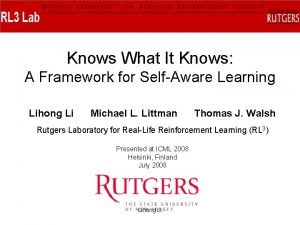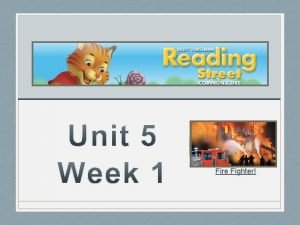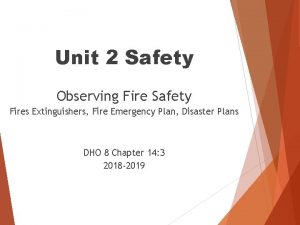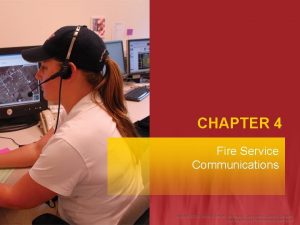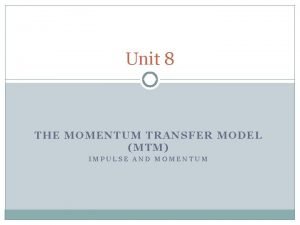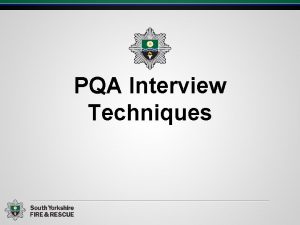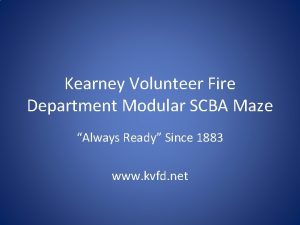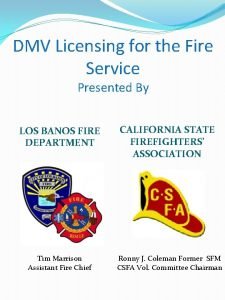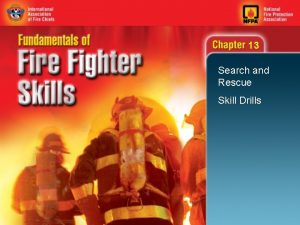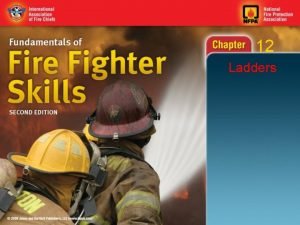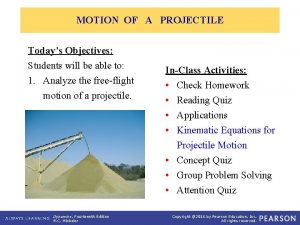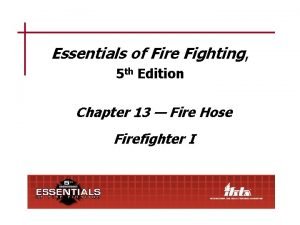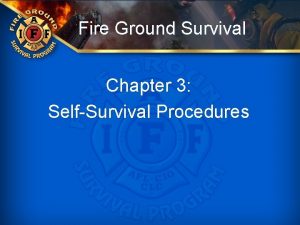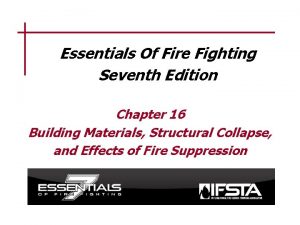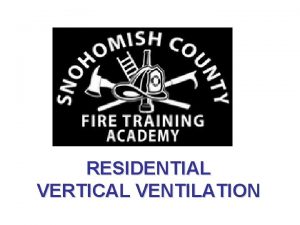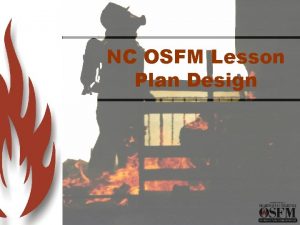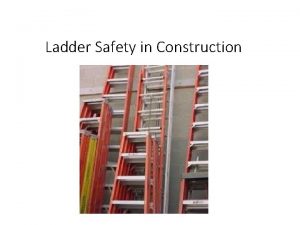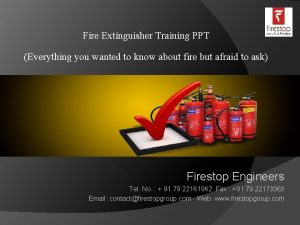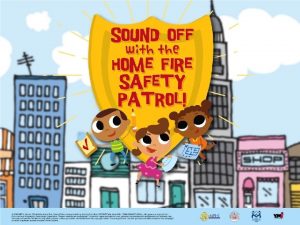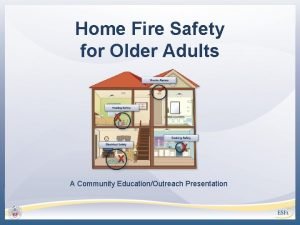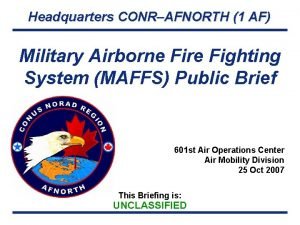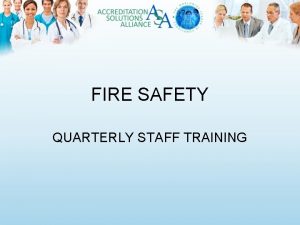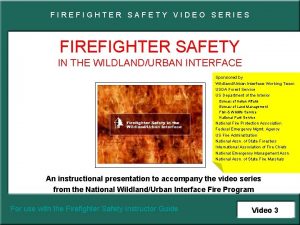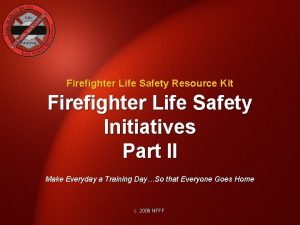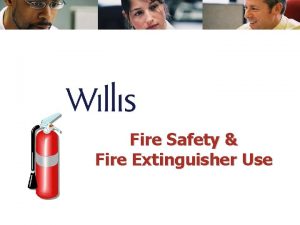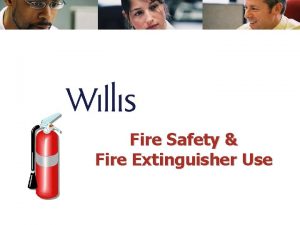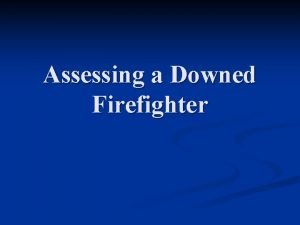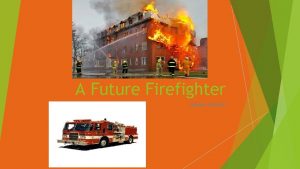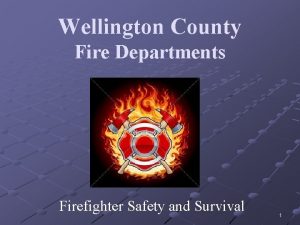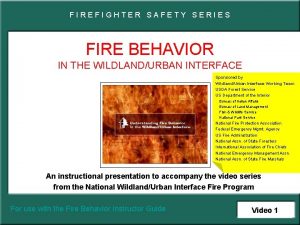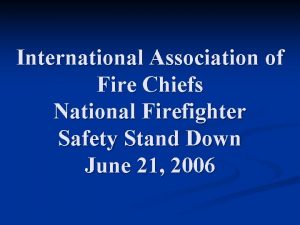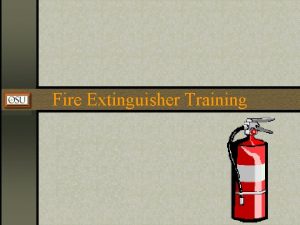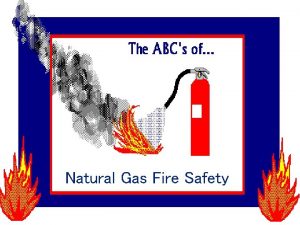Chapter 5 Firefighter Safety Introduction Fire service knows































- Slides: 31

Chapter 5 Firefighter Safety

Introduction • Fire service knows what injures and kills firefighters • Firefighting profession carries significant risk • Risk: chance of injury, damage, or loss • Risk management: process of minimizing risk • Firefighter safety is grounded in understanding risks and risk/benefit thinking 5. 2

Safety Issues • Understand what events and circumstances lead to injury or death • Fire and safety professionals have created standards, procedures, and initiatives – Prevent injuries and deaths • Efforts directly affected training and tactics employed today • Being aware of safety and injuryprevention helps the fire service address safety issues 5. 3

Firefighter Injury and Death Trends • 70 percent of all duty deaths and injuries occur during emergency activities • Heart attacks are the leading type of death-producing injury • Firefighting fatalities as a result of firerelated causes has increased • Understanding historical data helps us reduce deaths and injuries (see Figures 5 -1 and 5 -2) 5. 4

Safety Standards and Regulations • OSHA is responsible for enforcement of safety-related regulations in the workplace • Firefighting fatalities and injuries have noticeably decreased • OSHA/NFPA alliance furthers the importance and accountability placed on fire safety • NIOSH writes recommendations based on investigations of firefighter fatalities 5. 5

Figure 5 -3 An example of a NIOSH Alert issued to address disturbing trends in firefighter injuries and deaths. 5. 6

Firefighter Safety Initiatives • In 2004, USFA and NFFF developed sixteen Firefighter Life Safety Initiatives • In 2005, organizations agreed that a collective time-out was needed – Stand-down safety day • In 2007, the Firefighter Life Safety Initiatives were revisited • Time and more focused preventative energy are necessary 5. 7

5. 8

Preventive Actions • Goal of exploring safety issues is to reduce potential for further injury and deaths • “Safety triad” and assigning action responsibilities create firefighter safety system • All firefighters should be empowered to stop unsafe actions • Those whose actions are stopped should view the intervention as positive 5. 9

The Safety Triad • Most fire service operational environments are made up of three key components: – Procedures – Equipment – Personnel 5. 10

(A) (B) Figure 5 -4 The safety triad includes (A) procedures, (B) equipment (Photo courtesy of Richard W. Davis), and (C) personnel. 5. 11

(C) Figure 5 -4 (cont’d. ) The safety triad includes (A) procedures, (B) equipment (Photo courtesy of Richard W. Davis), and (C) personnel. 5. 12

Procedures • Describe formal and informal processes • Formal processes are in writing: – Standard operating procedures – Standard operating guidelines – Departmental directives and temporary memos • Informal procedures are part of the department’s routine but are not written 5. 13

Figure 5 -5 Sample SOP index. 5. 14

Figure 5 -6 Sample SOP format. 5. 15

Equipment • Equipment makes an operation more safe – Least important factor • Most critical equipment is designed to meet NFPA standards • Must be inspected and maintained • Complete documentation of repairs and maintenance is essential • Choosing the right tool for a given job is paramount for safety 5. 16

Personnel • Human factors cited as cause of injuries and deaths • Safety triad must address personnel issues • Everything learned in basic academy should be drilled • Firefighter must strive to retain information and skills • Firefighter's body must be capable of handling stress 5. 17

Figure 5 -8 Basic skills must be practiced on a regular basis. 5. 18

Personnel (cont’d. ) • Improve physical health and safety: – Annual health screening – Work hardening and fitness – Nutrition education • Keys to addressing mental health – Training and understanding of critical incident stress management (CISM) – Utilizing available member assistance programs (MAP) 5. 19

Figure 5 -10 Critical incident stress is inevitable and unpreventable. CISM can be addressed through recognition (know the signs and symptoms), peer support, and debriefings. 5. 20

Personnel (cont'd. ) • Attitude is the hardest to address • Factors that affect safety attitudes: – Fire department’s safety culture – Fire department’s history – Example set by others • Ways to have a positive attitude: – Practice good habits – Learn from others – Be vigilant 5. 21

Figure 5 -11 Developing a positive safety attitude and practicing safe habits will demonstrate safe examples to others. 5. 22

Firefighter Safety Responsibilities • Dependent on the efforts of everyone • Responsibility for firefighter safety rests in one of three areas: – Department – Working team – Individual 5. 23

(A) (B) (C) Figure 5 -12 Firefighter safety is dependent on all partners holding up their responsibilities: (A) administration, (B) teams, and (C) individual firefighters. 5. 24

The Department (cont'd. ) • Fire chiefs must create and enforce: – Rules – Procedures – Expectations • Create a health and safety committee • Develop standard procedures – – Personal protective equipment Firefighter injuries Training safely Many others 5. 25

The Department (cont'd. ) • Implement risk management plan – – Risk a life to save a life Reduce risk for valued property Take no risk for that which is lost Retreat when risk excessive or deteriorating quickly • Research and purchase appropriate equipment • Development and delivery of awareness training 5. 26

The Team • Must hold up its part of the safety partnership • Team should follow these procedures – Utilize an ICS – Work together and remain intact – Look after each other 5. 27

The Individual Firefighter • Readiness is an attitude as well as a physical state • Each individual must fill a role • Perform as trained • Working alone or outside the action plan endangers individuals and the team • Use an incident engagement checklist 5. 28

Figure 5 -13 Freelancing endangers individuals and the team. This firefighter is working alone in a collapse zone— for what gain? 5. 29

Figure 5 -14 Firefighters should perform a mental incident engagement checklist for every response. 5. 30

Lessons Learned • Firefighter safety is dependent on many factors • 70 percent of injuries and deaths occur during emergency activities – Majority due to overexertion • Accident prevention mitigates hazards • Use safety triad between department administration, working teams, firefighter • Individuals must develop safe habits and attitudes 5. 31
 Knows what it knows: a framework for self-aware learning
Knows what it knows: a framework for self-aware learning Fire suffix
Fire suffix Fire hose reel signage standards
Fire hose reel signage standards Chapter 14:3 observing fire saftey
Chapter 14:3 observing fire saftey Chapter 14:1 using body mechanics
Chapter 14:1 using body mechanics Fire service communications
Fire service communications Impulse momentum bar chart
Impulse momentum bar chart Firefighter pqas
Firefighter pqas Firefighter entanglement prop
Firefighter entanglement prop Human crutch
Human crutch Firefighter mayday acronyms
Firefighter mayday acronyms Dl546a
Dl546a Webbing sling drag
Webbing sling drag Ladder raising and proper climbing angle
Ladder raising and proper climbing angle Firefighter hose
Firefighter hose Firefighter interview tips
Firefighter interview tips Chafing blocks fire hose
Chafing blocks fire hose Grab lives fire
Grab lives fire Firefighter essentials 7th edition
Firefighter essentials 7th edition Firefighter
Firefighter 5 cut center rafter louver
5 cut center rafter louver Nc osfm lesson plans
Nc osfm lesson plans Three legged step ladder
Three legged step ladder Fire safety training powerpoint
Fire safety training powerpoint Reichstag fire who was the fire starter
Reichstag fire who was the fire starter Canvas connection hvac
Canvas connection hvac A-e rwi
A-e rwi Fire extinguisher parts
Fire extinguisher parts Home fire safety patrol
Home fire safety patrol European fire safety community
European fire safety community Military fire safety
Military fire safety Race fire safety
Race fire safety
